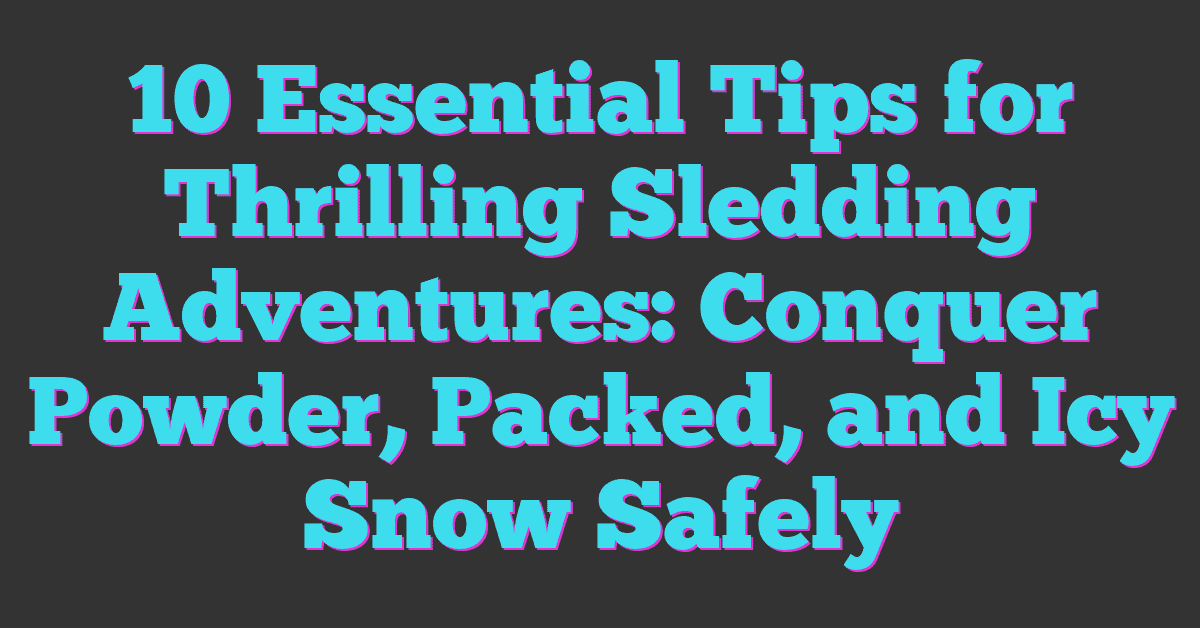Hitting the slopes is one of my favorite winter activities, but safety always comes first. Downhill skiing can be thrilling, yet it also comes with its share of risks. That’s why having the right safety gear is essential for a fun and worry-free experience.

Best Helmets for Downhill Skiing
Safety on the slopes is paramount, and wearing a helmet is one of my top priorities when I hit the mountains. A good helmet can mitigate the risk of serious injury while providing comfort and warmth.
Importance of Wearing a Helmet
Wearing a helmet reduces the risk of head injuries during falls and collisions. Studies show that helmets can decrease the severity of traumatic brain injuries by up to 60%. I’ve personally experienced tumbles that could’ve led to serious injuries, but my helmet absorbed impacts effectively. Beyond protection, helmets offer warmth and help keep your head stable in cold weather, allowing for better focus on technique and enjoyment during your run.
Top Helmet Brands
Choosing the right helmet from reputable brands makes a significant difference in safety. The following top brands consistently deliver high-quality products:
- Giro: Known for comfort and lightweight designs, Giro helmets feature advanced safety technologies and ventilation systems.
- Smith: Smith helmets provide excellent impact resistance with customizable fit options and integrated audio systems for entertainment.
- Poc: Combining innovative design with robust safety features, Poc helmets focus on maximizing protection while minimizing weight.
- K2: K2 helmets are recognized for their durability and stylish designs, with ventilation systems that let me stay cool during active skiing.
- Bonfire: Bonfire helmets blend affordability with solid safety ratings, making them a great choice for budget-conscious skiers.
Selecting a helmet from these brands ensures safety and enhances the overall skiing experience.
Protective Eyewear
Protective eyewear plays a crucial role in keeping my vision clear and my eyes safe while skiing. The right ski goggles shield against UV rays, wind, and snow, ensuring a better experience on the slopes.
Types of Ski Goggles
- Full-Face Goggles: These provide maximum coverage and protection, especially during high-speed runs. They wrap around my face, preventing snow and wind from getting in.
- Over-the-Glass (OTG) Goggles: Designed for those who wear prescription glasses, OTG goggles fit comfortably over frames. They allow me to see clearly without sacrificing comfort.
- Helmet-Compatible Goggles: These goggles match perfectly with my helmet, ensuring a secure fit and better airflow to reduce fogging.
- Interchangeable Lens Goggles: These offer versatility by allowing me to swap lenses according to varying light conditions. Bright, sunny days call for darker lenses, while overcast conditions work well with lighter options.
Recommended Goggles for Safety
- Smith I/O Mag: These goggles feature an interchangeable lens system, providing adaptability to changing weather. Their excellent UV protection and anti-fog properties make them a top choice.
- Oakley Flight Deck: Known for their wide field of vision, these goggles enhance visibility on the slopes. Their anti-fog coating keeps my view clear all day long.
- Giro Contact: With a quick-change lens system, Giro Contact goggles are perfect for all conditions. Their comfortable fit and ventilation keep my eyes protected and vision unobstructed.
- Anon M4: These offer a magnetic lens interchange system, making it easy to adjust to the weather. Their fit and comfort allow for hours of wear without discomfort.
Body Protection Gear
Body protection gear plays a crucial role in keeping me safe while enjoying downhill skiing. As I race down the slopes, I trust that the right protection minimizes the risk of injury and allows me to focus on the thrill of the ride.
Ski Pads and Impact Vests
Ski pads and impact vests provide essential cushioning during falls. I prefer using padded shorts, which shield my hips and thighs from bruises and impact. These shorts feature high-density foam designed to absorb shocks, making a big difference when I take a tumble.
Impact vests, which cover my torso, are great for protecting my ribs and back. With their lightweight materials, they allow for maximum mobility while still delivering necessary protection. Brands like Dainese and Troy Lee Designs offer options with cleverly placed padding, ensuring comfort and security on the slopes.
Importance of Knee and Shin Guards
Knee and shin guards are vital for skiers like me who appreciate speed and dynamic movements. I often wear knee guards to protect against falls or collisions. These guards prevent knee injuries, offering support and stability just where I need it.
Shin guards also help shield my legs from the harsh impact of ski edges. They reduce the chances of cuts and bruises during a fall. Lightweight and streamlined designs, such as those from Level and POC, ensure I stay agile while keeping my legs safe.
By investing in proper body protection gear, I’m able to ski with confidence, allowing me to focus on perfecting my technique and enjoying the exhilaration of my favorite winter sport.
Footwear and Bindings
Footwear and bindings play a vital role in ensuring safety while downhill skiing. Choosing the right ski boots and bindings can significantly enhance stability and control on the slopes, allowing for a thrilling experience without compromising safety.
Best Ski Boots for Safety
Ski boots act as the vital connection between my feet and the skis. Properly fitted, high-quality ski boots ensure comfort and support while safeguarding against injury. Look for boots with features like flex ratings that match my skiing style—more flex for beginners or softer snow and stiffer boots for aggressive skiers on groomed trails. Brands like Salomon, Lange, and Tecnica offer excellent options that prioritize safety and performance.
Additionally, always ensure boots fit snugly but not painfully. A well-fitted boot prevents excessive movement of my feet, reducing the risk of losing control. Furthermore, waterproof and insulated boots keep my feet warm and dry, enhancing comfort.
Role of Bindings in Preventing Injuries
Bindings serve as the crucial link between my ski boots and skis, influencing overall safety. Properly adjusted bindings minimize injury risk during falls by releasing my skis when needed, reducing strain on my knees and ankles. Look for bindings with adjustable settings based on skill level and weight to optimize safety.
Higher-end models, such as those from Marker, Look, and Tyrolia, provide reliable release mechanisms and enhanced control, perfect for various terrains. Regular maintenance of bindings ensures they function correctly, contributing to a safer skiing experience. By making informed choices about ski boots and bindings, I can ski confidently and focus on enjoying the slopes.
Conclusion
Staying safe while enjoying downhill skiing is something I take seriously. With the right gear I can focus on the thrill of the slopes instead of worrying about potential injuries. Investing in a quality helmet and protective eyewear makes a world of difference.
I’ve learned that body protection gear like padded shorts and impact vests can really cushion falls. Plus having the right boots and bindings ensures I stay stable and in control.
When I gear up with the best safety equipment I feel more confident and ready to tackle any run. So let’s hit the slopes safely and make the most of our skiing adventures.
















